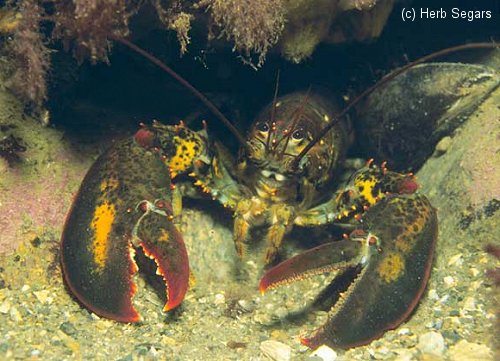American Lobster (4/6)
Some Strange Lobsters
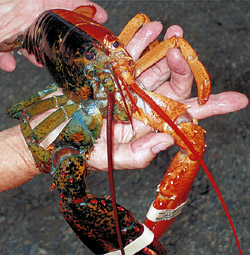
Lobster shells are usually a blend of the three primary colors - red, yellow, and blue. Those colors mix to form the greenish-brown mottle of most lobsters.
This lobster, though, has no blue in half of its shell. The odds of this kind of mutation occurring are very rare - something like one in 50 million to 100 million. This one was caught in Maine in 2006.
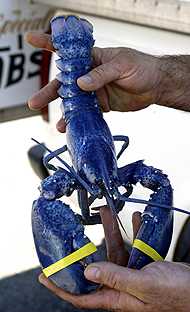
Scientists say blue pigmentation comes from genetic chance, calculated to occur in 1 out of 4 million lobsters. This one was caught off New Jersey in 2003. It now resides at Sea World.
The blue pigment breaks down when a lobster is cooked, turning it bright orange-red, like the one above ( which is not cooked. )
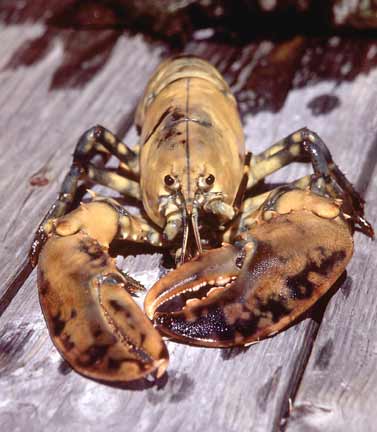
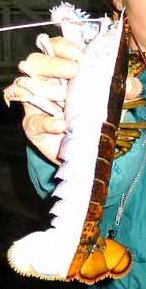
The lobster at right was caught off Nova Scotia in 2002. Not only is it precisely half albino, it is also a hermaphrodite - male on one side and female on the other - look closely at the tail.
Lobsters develop independently on each side of the body, which accounts for the two different claws, and also for bizarre patterns like this.
